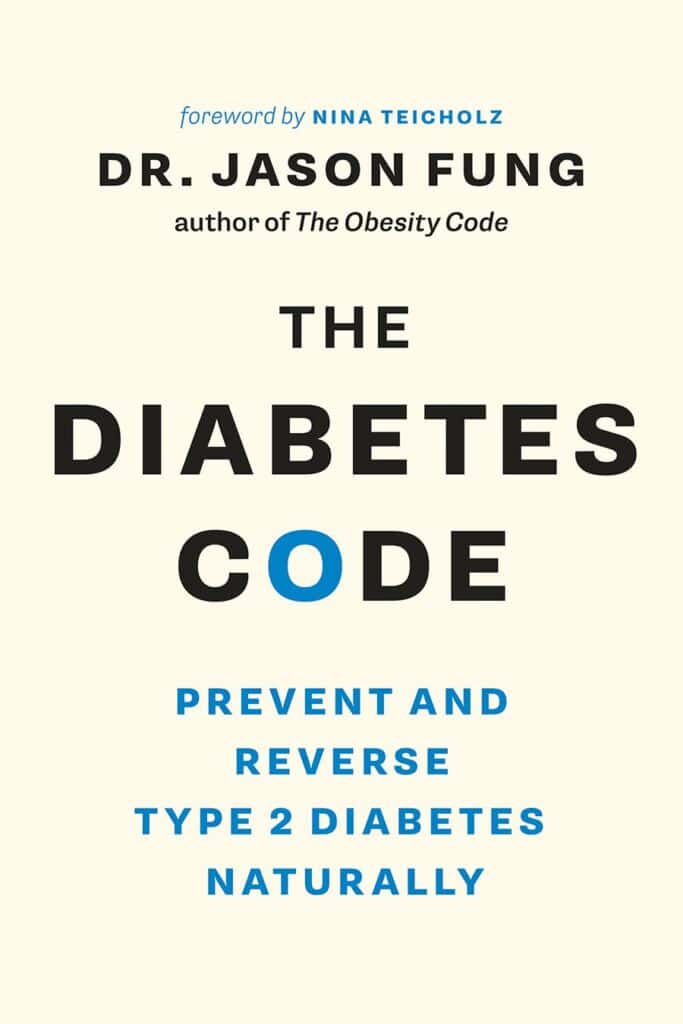I’m excited to chat about the best time restricted eating schedule. I’ve recently become obsessed with learning all there is to know about fasting and time restricted eating. After some trial and error, I finally landed on an eating schedule that works well for me.
I was excited to find out that the schedule I gravitated towards was in line with the advice of Dr. Andew Huberman, neuroscientist and professor at Stanford University School of Medicine.

Disclaimer: Always consult a medical professional before beginning time restricted eating or any form of fasting. Time restricted eating may not be suitable for children, pregnant or nursing mothers, those with Type 1 Diabetes, underweight individuals, etc.. This post is informative only and is not medical advice.
What is Time Restricted Eating?
Time restricted eating is exactly what it sounds like. It is eating that is restricted by time—it means eating all of your calories for the day within a certain period of time. What that period of time looks like is a personal choice.
A person may eat from 8AM-8PM, 10AM-6PM or even a short period of time like 12PM-4PM and so on. Eating within any set parameters of time falls under the umbrella of time restricted eating.
Time restricted eating goes hand in hand with periods of fasting. Most people restrict the length of time they eat in order to spend more time fasting. People aim to fast for various periods of time but one of the most popular ratios is 16:8. That’s 16 hours of fasting and eight hours of eating.
Benefits of Time Restricted Eating?
Weight/Fat Loss
Many people give time restricted eating a go in order to lose weight/fat. In our world of convenience, we have the ability to eat from the moment we wake up until we crawl into bed and every moment in between.
In recent decades we’ve gone from eating three main meals per day to eating six to even eight times per day. A recent study, that tracked participants for one year, showed that time-restricted eating was not significantly more effective than calorie counting (there was approximately a 3lb. difference in favor of time restricted eating).
This study is different from those previous studies as it was done on people (verses mice) and took place in a real-world setting.
That being said, time restricted eating was found to be at least as effective as calorie counting, so it is considered an effective weight loss tool. I personally prefer it, because of the constant tracking that comes with calorie counting.
I am also a bit hesitant to assume all of the participants in either group followed protocol 100% for a year. Not to mention, that there are many fasting benefits beyond weight loss.
How Many Hours a Day Does the Average American Eat?
According to a study conducted by Dr. Satchin Panda, Salk Institute for Biological Studies professor, the average American eats for nearly 15 hours out of the total day. That leaves just maybe an hour or so before bed that we are not eating.
Obviously, if we are eating around the clock, there is a good chance we are taking in more calories than we need. Longer fasting periods can put you into ketosis, which simply means burning fat for energy.
When your body is in a fasted state, it is able to pull energy from stored body fat rather than carbohydrates. That sounds great, right?
Fasting/time restricted eating is successful in preventing and treating metabolic disorders. It offers weight loss while protecting against muscle loss, which many people fear when restricting calories.
Time Restricted Eating Protects Against Chronic Diseases
Time restricted eating is well known for its ability to reverse type 2 diabetes. Many people are able to accomplish this within just a few months. In his popular book, The Diabetes Code, Dr. Jason Fung walks the reader through this process.
This post contains affiliate links. At no additional cost to you, I may earn a small commission on qualifying purchases.
Intermittent fasting protects organs against other chronic diseases like heart disease, age-related neurodegenerative disorders and some cancers. Studies show that fasting may slow the growth of certain cancers and even make some cancer treatments more effective.
On that note, if time restricted eating helps you lose weight, you will automatically reduce your odds of developing many cancers.
Time Restricted Eating Improves Cognitive Function & Focus
It’s a common side effect to feel a little sleepy after eating, especially after a large meal. This is due to the parasympathetic nervous system which conserves energy and slows down the heart rate in order to absorb nutrients.
Many people enjoy being in a fasted state to experience this superior mental clarity and focus. When you are in a fasted state you are more sensitive to caffeine as well.
Have ever eaten a big meal then tried to offset it with caffeine just to realize it didn’t work? It would have worked much more effectively prior to the big meal.
Fasting may improve working memory, and it fights inflammation, which some believe is the reason it improves certain mood disorders.
Time Restricted Eating Saves Time and Money
It may sound silly, but time restricted eating is likely to carve at least one meal/snack out of your day, and maybe even two. We often eat out of boredom or indulgence rather than true hunger.
Setting limits on eating times is a good way to spend less money on food as well as preperation time. The most expensive foods are usually the ones we don’t really need anyways. The gourmet coffee we grab while running errands or the ice cream and wine we have after dinner.
If you have kids, consider the number of snacks they eat or request in a given day. For some kids, it outweighs the amount they eat at mealtimes, which brings me to my next point: junk food.
Time Restricted Eating Reduces Junk Food Intake
Time restricted eating is a great way to reduce the amount of junk food you take in. If you think about the foods most of us eat after dinner, they tend to be the least healthy of our day. Not eating after 7:00 p.m. means I don’t lick the muffin batter when I make my kids’ breakfast muffins.

I realize that sounds harmless, but I was literally eating an entire muffin by the time the batch was made! To make matters worse, it was at 10:00 p.m. when my kids are asleep! It also means I don’t munch on a second serving of dark chocolate just because.
We have mostly stopped allowing our kids to eat after dinner unless it’s a special occasion. After some resistance, they have accepted it, and I assure you they are not starving to death ;). Knowing that snacks aren’t available after dinner encourages them to eat a meal that will fill them up.
They can certainly have something after dinner, just not hours after when I announce that it is time to brush their teeth ;). We were previously allowing them a fruit or veggie (they rarely took me up on the post dinner veggie), but after studying time restricted eating,
I realized I was teaching them to eat around the clock. This practice will not serve them well in adulthood. This was the norm when many of us were growing up anyways and especially the decades preceding (1960s and 1970s).
What is the Best Time Restricted Eating Schedule?
I stayed stuck on this question for a long time as I suspect many do. Should it be a hard and fast rule? What do I do if I get really hungry? Or the big 90’s myth—am I going to go into starvation mode and burn muscle instead of fat?
Short answer, no, you won’t! Most experts agree you can put on and maintain adequate muscle mass on most any eating schedule.
There is a lot of positive data surrounding the 16:8 fast, but some suggest mixing in longer fasts when convenient. Contrary to what you might think, at least one study shows less weight loss with a shorter 4-6 hour eating window due to potential overeating.
It’s crucial not to binge and to still eat healthfully if you choose a shorter eating window. What I love about the 16:8 ratio (8 hours eating, 16 hours fasting) is that it’s doable and not much of an inconvenience to me at all.
It is beneficial to attach the fasting hours to your sleep, because sleeping offers such a powerful fasting state. Whether you do this at night or in the morning may depend on if you are an early riser or night owl. It is best not to work against your natural tendency.
I am a night owl and fine to have my coffee with a splash of milk when I wake up and hold off eating until at least 10:30. If you are an early riser and get up at say, 5:00 a.m., you may want to eat sooner.

I am also typically fine with not eating after dinner. Once I made the rule and got out of the habit, it’s not usually a thought. I don’t like being hungry at night though, so I try to hold off on dinner until at least 6:00 p.m.
When it gets dark early in winter months, I am tempted to eat earlier. Here in Tennessee, it feels like 8 pm when it’s 4 pm for a while. I go to bed about 11 pm for reference.
Finding the Optimal Time Restricted Eating Schedule Takes Time
It’s important to note that if you have been eating 15 hours a day like the average American, it will take some time to get down to an eight-hour window. 12 hours is a great start even if you have little interest in time restricted eating or fasting.
You can creep the hours down one at a time every couple of weeks until you find something that feels good and works with your life. Don’t worry, there is no need to skip the holiday party or fun late dinner with friends!
You do want to be consistent the majority of the time to get the maximum benefits of time restricted eating. Because we have lots of data on the 8:16 window, it’s safe for most anyone and extremely doable.
I suggest that it is the best time restricted eating schedule for the average person. Keep in mind that there is nothing magical about the eight-hour mark. Maybe it’s nine or seven for you.
Dr. Andrew Huberman shares in his podcast, Huberman Lab, episode #41 (Effects of Fasting & Time Restricted Eating on Fat Loss & Health) why the eight-hour time frame was selected in a popular study. It was the due to the time restriction of a graduate student working on the study.
According to Dr. Satchin Panda, there are many benefits to be had by simply not eating one hour after waking and 2-3 hours prior to sleeping.
Hacks to Stick with Time Restricted Eating
Dr. Huberman offers lots of information and tips in the podcase episode linked above. I encourage anyone interested in any form of fasting or time restricted eating to watch it.
The most important hack is to, of course, choose the best time restricted eating schedule for you. That means choosing an eating schedule that works with your natural desire to eat, your family and work schedule, etc.
Many people choose to have black coffee or tea during their fast. Some may even add a little cream of milk to it. It is hard to know what breaks the fast unless you wear a continuous glucose monitor. According to Dr. Huberman as it depends on many individual factors.
Huberman states that you can likely have a couple of peanuts and not break your fast if you are in a deep fasted state. Yet, he warns if you are not in a deep fasted state (e.g., post dinner) something miniscule can break the fast.
How to Get Started with Time Restricted Eating
The low hanging fruit in my opinion is to begin with a 12-hour eating widow if you are brand new. I think everyone can agree, there is rarely a reason for a person to eat more than 12 hours a day.
Despite this, most Americans are doing just that daily. Be aware that most people underestimate the length of time they eat, so take note of start and stop times.
Wine or small bites can break a fast, so be sure to consider all food and drink intake. Whether you want to lose weight, have more energy or simplify your life, I believe time restricted eating has lots to offer.
I hope you are able to find the best time restricted eating schedule (for you) and reap the benefits. If you enjoyed reading this post, you may enjoy “What is a Naked Carb?” as well.
